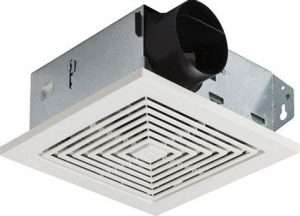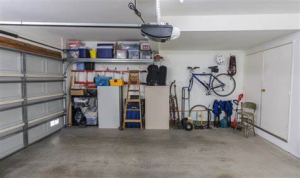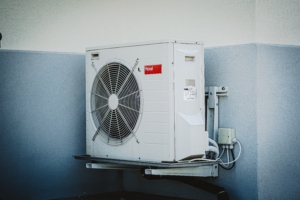How Often Should I Change My Air Filters? Guide

Maintaining good indoor air quality is crucial for the health and comfort of your home. One essential component of achieving this is regularly changing your air filters. In this blog, we will explore the importance of air filters and provide a guide to determining the ideal frequency for air filter replacement.
Here’s a general guideline for how often you should change the air filter in different applications, along with the suggested type of air filter and frequency of replacement:
1. Residential HVAC System:
– Type of Air Filter: Pleated filter with a MERV rating of 8-12.
– Frequency of Replacement: Every 1-3 months, depending on factors such as the presence of pets, allergies, dust levels, and household occupancy.
2. Commercial HVAC System:
– Type of Air Filter: Pleated filter with a MERV rating of 8-14, depending on the specific requirements.
– Frequency of Replacement: Every 1-3 months, but it can vary depending on the size of the space, number of occupants, and the nature of the business (e.g., high-traffic areas or manufacturing facilities may require more frequent replacement).
3. Industrial HVAC System:
– Type of Air Filter: High-efficiency filters with a MERV rating of 14-16 or HEPA (High-Efficiency Particulate Air) filters.
– Frequency of Replacement: Every 1-6 months, depending on the specific needs of the industrial facility, type of contaminants present, and compliance with regulatory requirements.
4. Medical Facilities or Laboratories:
– Type of Air Filter: HEPA filters or ULPA (Ultra-Low Penetration Air) filters, depending on the specific requirements.
– Frequency of Replacement: Regular monitoring and adherence to strict maintenance schedules based on industry guidelines and regulations.
5. Residential or Commercial Spaces with Allergies or Asthma Concerns:
– Type of Air Filter: HEPA filters or high-efficiency filters with a MERV rating of 13-16.
– Frequency of Replacement: Every 1-2 months, or as recommended by healthcare professionals, depending on the severity of allergies or asthma symptoms.
Always refer to the manufacturer’s guidelines, HVAC system specifications, and professional recommendations for the specific application to determine the appropriate air filter type and replacement frequency.
Understanding Air Filters:
Air filters play a vital role in HVAC systems by trapping airborne particles, allergens, and contaminants. They help improve indoor air quality and prevent these pollutants from circulating throughout your home. Various types of air filters are available, ranging from fiberglass to high-efficiency particulate air (HEPA) filters, each with different levels of effectiveness. The lifespan of an air filter depends on factors such as its type, the air quality in your home, and the system’s usage.
When it comes to air filters, several different types are available, each with varying levels of effectiveness in capturing and removing airborne particles. Here are the most common types of air filters:
1. Fiberglass Filters:
– Fiberglass filters are the most basic and inexpensive option.
– They are made of layered fiberglass fibers, forming a loosely woven material.
– These filters are designed to capture larger particles like dust and debris but are less effective at trapping smaller particles or allergens.
2. Pleated Filters:
– Pleated filters consist of a pleated, paper-like material attached to a sturdy frame.
– They offer a larger surface area for filtration due to the pleats, which increases their efficiency.
– Pleated filters are available in various levels of filtration, ranging from basic to high-performance versions capable of capturing smaller particles like pollen and pet dander.
3. Electrostatic Filters:
– Electrostatic filters use electrostatic charges to attract and capture particles.
– They are available in both disposable and washable forms.
– These filters can effectively trap smaller particles and allergens but may need more frequent cleaning or replacement to maintain their effectiveness.
4. High-Efficiency Particulate Air (HEPA) Filters:
– HEPA filters are among the most efficient air filters available.
– They are made of dense, pleated fibers and can capture up to 99.97% of particles as small as 0.3 microns.
– HEPA filters are highly effective in removing allergens, dust mites, pollen, and other fine particles.
– These filters are commonly used in hospitals, cleanrooms, and homes of individuals with allergies or respiratory conditions.
5. Activated Carbon Filters:
– Activated carbon filters are specifically designed to absorb and eliminate odors, chemicals, and volatile organic compounds (VOCs).
– They consist of a porous carbon material that chemically binds with pollutants to reduce their presence in the air.
– These filters are often used in conjunction with other types of filters to enhance overall air quality.
6. UV Filters:
– UV filters use ultraviolet light to neutralize airborne pathogens, such as bacteria, viruses, and mold spores.
– They are often installed within the HVAC system to disinfect the air as it passes through.
– UV filters work in combination with other filters and are particularly useful in preventing the growth of mold or bacteria within the system.
It’s important to note that the effectiveness of an air filter depends not only on its type but also on factors like the size of the particles it can capture, the MERV (Minimum Efficiency Reporting Value) rating, and the specific needs of your environment. Consulting with an HVAC professional or referring to the manufacturer’s recommendations can help you determine your home’s most suitable air filter type.
Determining the Replacement Schedule:
To determine how often you should change your air filters, it’s essential to consider several factors. Firstly, refer to the manufacturer’s recommendations and guidelines specific to your HVAC system. These instructions usually provide a suggested timeline for filter replacement. Additionally, assess the air quality in your home by identifying common pollutants such as dust, pollen, pet dander, and smoke. If you notice signs of a clogged or dirty filter, such as reduced airflow or increased dust accumulation, it’s an indication that it’s time for a replacement.
Frequency Considerations:
Certain circumstances may warrant more frequent air filter replacements. For households with high-traffic areas or pets, the filters tend to accumulate more dirt and debris, requiring more frequent changes. Environmental factors, such as living in an area with high pollen or dust levels, may also necessitate more frequent filter replacements. By considering these factors, you can customize the replacement frequency to suit your specific needs.
General Guidelines for Air Filter Replacement:
As a general rule of thumb, it is recommended to change disposable air filters every 30 days. However, this timeframe can vary based on the factors mentioned above. Washable filters, on the other hand, can be cleaned and reused, but they also have a limited lifespan. It’s crucial to follow the manufacturer’s instructions for washing and reinstalling these filters. Additionally, consider changing air filters seasonally to accommodate changes in outdoor conditions. Balancing energy efficiency and air quality is essential, as dirty filters can reduce the efficiency of your HVAC system and increase energy consumption.
Steps to Change Air Filters in Different Applications:
General steps to replace disposable air filters:
1. Turn off your HVAC system.
2. Locate the air filter compartment.
3. Remove the old filter.
4. Insert the new filter, ensuring it is correctly aligned.
5. Secure the filter in place.
6. Turn the HVAC system back on.
For washable filters, refer to the manufacturer’s instructions on cleaning and reinstalling. Remember to follow proper safety precautions, such as wearing gloves and avoiding contact with contaminants when handling dirty filters.
Replacing an air filter in your house is a relatively simple task. Here’s a step-by-step guide to help you:
1. Determine the filter size: The first thing you need to do is find out the correct size of the air filter you need. This information is usually printed on the existing filter or can be found in the user manual for your HVAC system.
2. Purchase a new filter: Once you know the correct size, purchase a replacement filter. There are different types of air filters available, such as fiberglass, pleated, or high-efficiency filters. Choose one that suits your needs and budget. Higher MERV (Minimum Efficiency Reporting Value) ratings indicate better filtration, but they may also restrict airflow more, so check your HVAC system’s specifications to ensure compatibility.
3. Locate the air filter: The air filter is typically located in the air return duct or inside the air handler or furnace unit. It might be behind a grille or in a slot near the blower motor. Consult your HVAC system’s manual if you’re unsure about the exact location.
4. Turn off the HVAC system: Before you begin, it’s important to turn off your heating, ventilation, and air conditioning (HVAC) system to ensure safety and prevent the system from pulling in debris during the replacement process.
5. Remove the old filter: Once the system is turned off, carefully remove the existing air filter. Note the direction of airflow indicated by arrows on the filter frame, as you’ll need to install the new filter correctly.
6. Clean the filter housing (if necessary): Take a moment to inspect the filter housing or the area around it. If there’s any dirt or debris present, use a vacuum cleaner or a damp cloth to clean it before inserting the new filter.
7. Insert the new filter: Take the new filter and slide it into the filter slot, aligning the airflow arrows in the correct direction. Ensure a snug fit, but be careful not to force it.
8. Secure the filter: If your system has a cover or a latch to secure the filter, make sure to close or lock it properly.
9. Turn on the HVAC system: With the new filter securely in place, turn your HVAC system back on.
10. Regularly check and replace the filter: It’s recommended to check your air filter every 1-3 months and replace it when it’s dirty or clogged. Different factors such as pets, household dust, or environmental conditions may affect the lifespan of the filter.
To change the air conditioner filter in a wall unit, follow these steps:
1. Locate the filter: The filter in a wall unit air conditioner is typically located behind a front panel or grille. Check the user manual or manufacturer’s instructions for the specific location of the filter in your unit.
2. Turn off the air conditioner: Before you start, turn off the air conditioner to ensure safety and prevent any potential damage to the unit.
3. Remove the front panel or grille: Use a screwdriver or follow the manufacturer’s instructions to remove the front panel or grille that covers the filter.
4. Take out the old filter: Carefully remove the existing air filter from its slot. Pay attention to the direction of airflow indicated on the filter frame.
5. Clean the filter compartment (if necessary): Take a moment to inspect the filter compartment. If there is any dust or debris present, use a vacuum cleaner or a damp cloth to clean it before inserting the new filter.
6. Insert the new filter: Place the new filter into the filter slot, making sure to align it with the airflow direction indicated on the filter frame. Ensure a snug fit but avoid forcing it.
7. Replace the front panel or grille: Once the new filter is in place, reattach the front panel or grille securely. Make sure it is properly aligned and fastened according to the manufacturer’s instructions.
8. Turn on the air conditioner: With the new filter installed and the front panel or grille securely in place, you can now turn on the air conditioner and resume normal operation.
9. Regularly check and replace the filter: It’s important to check the air filter regularly, typically every 1-3 months, and replace it when it becomes dirty or clogged. This will help maintain proper airflow and improve the efficiency of your wall unit air conditioner.
Remember to consult the user manual or follow any specific instructions provided by the manufacturer for your particular wall unit air conditioner model.
Changing the air filter in a ceiling-mounted HVAC system is a slightly different process than changing it in a wall unit or furnace. Here’s how you can replace the air filter in a ceiling-mounted system:
1. Ensure safety: Before you start, ensure you have a safe and stable platform to reach the ceiling-mounted air filter. Use a sturdy ladder or step stool, if necessary, and take necessary precautions to prevent falls or injuries.
2. Locate the air filter: In a ceiling-mounted HVAC system, the air filter is usually housed in a dedicated filter grille or slot on the ceiling. Look for a grille or panel that can be easily accessed and removed.
3. Turn off the HVAC system: Before you begin, it’s crucial to turn off the HVAC system to prevent any potential hazards. Locate the thermostat and turn off the cooling or heating function.
4. Remove the filter grille or access panel: Once the system is turned off, carefully remove the filter grille or access panel that covers the air filter. This may require using a screwdriver or following specific instructions provided by the manufacturer.
5. Take out the old filter: Carefully slide out the existing air filter from the filter grille or slot. Note the direction of airflow indicated by arrows on the filter frame.
6. Clean the filter grille or slot (if necessary): Inspect the filter grille or slot for any accumulated dirt or debris. Use a vacuum cleaner or a damp cloth to clean it, ensuring there is no obstruction before inserting the new filter.
7. Insert the new filter: Take the new filter and slide it into the filter grille or slot, aligning the airflow arrows in the correct direction. Ensure a snug fit but avoid forcing it.
8. Replace the filter grille or access panel: Once the new filter is in place, reattach the filter grille or access panel securely. Ensure it is properly aligned and fastened according to the manufacturer’s instructions.
9. Turn on the HVAC system: With the new filter installed and the filter grille or access panel securely in place, you can now turn on the HVAC system and restore normal operation.
10. Regularly check and replace the filter: It’s important to check the air filter every 1-3 months and replace it when it becomes dirty or clogged. This will help maintain good indoor air quality and ensure the HVAC system operates efficiently.
Please note that the exact process may vary depending on the specific type and model of your ceiling-mounted HVAC system. Consult the user manual or follow any additional instructions provided by the manufacturer for your particular system.
Additional Tips for Better Air Quality:
Apart from regular air filter replacement, consider implementing these tips to improve indoor air quality:
1. Schedule regular HVAC system maintenance to keep it in optimal condition.
2. Use air purifiers as supplementary devices to filter the air further.
3. Maintain cleanliness in your home by vacuuming regularly, reducing clutter, and minimizing indoor pollutant sources.
If you have concerns about air quality in your home or workplace, you can take the following steps to test and assess the air quality:
1. Identify specific concerns: Determine the specific air quality concerns you have. This could be related to allergens, pollutants, volatile organic compounds (VOCs), mold, or other contaminants. Identifying the specific concerns will help guide your testing efforts.
2. Conduct a visual inspection: Start by visually inspecting your surroundings for any visible signs of mold growth, water damage, or other potential sources of air quality issues. Look for areas with poor ventilation or excessive dust accumulation.
3. Monitor symptoms: Pay attention to any health symptoms or discomfort you experience when indoors, such as allergies, respiratory problems, headaches, or fatigue. Note if the symptoms are consistently present or if they improve when you’re outside or in a different environment.
4. DIY air quality testing kits: Consider using DIY air quality testing kits. These kits are widely available and can help identify certain pollutants such as mold, VOCs, or formaldehyde. Follow the instructions provided with the kit to collect air samples and send them to a lab for analysis.
5. Hire a professional: If you want a comprehensive assessment of your indoor air quality, consider hiring a professional indoor air quality testing company. They will have specialized equipment and expertise to analyze air samples and provide detailed reports on various pollutants, allergens, and overall air quality.
6. Radon testing: If you’re concerned about radon gas, which is a radioactive gas that can be found in some homes, you can conduct a specific radon test. Radon test kits are available for purchase, or you can hire a professional to perform the test.
7. HVAC inspection: Have your heating, ventilation, and air conditioning (HVAC) system inspected by a qualified technician. They can check for any issues or sources of contamination within the system, ensure proper airflow, and identify potential maintenance needs.
8. Address identified issues: If testing reveals any air quality concerns or if you identify sources of contamination during your inspection, take steps to address them. This might involve improving ventilation, fixing leaks or water damage, addressing mold growth, using air purifiers, or taking other appropriate measures based on the specific issues identified.
Remember that addressing air quality concerns may require a combination of actions, such as improving ventilation, maintaining a clean environment, and addressing specific pollutants or sources of contamination. It’s recommended to consult with professionals and experts in indoor air quality if you need further guidance or assistance.
Summary: How Often Should I Change My Air Filter
Regularly changing your air filters is a top priority in maintaining good indoor air quality and ensuring the efficient operation of your HVAC system. Following the manufacturer’s recommendations and considering specific circumstances such as air quality and environmental factors, you can determine the ideal frequency for air filter replacement. Remember, clean air filters lead to healthier and more comfortable living environments, so make it a priority to keep them fresh and functioning correctly.









